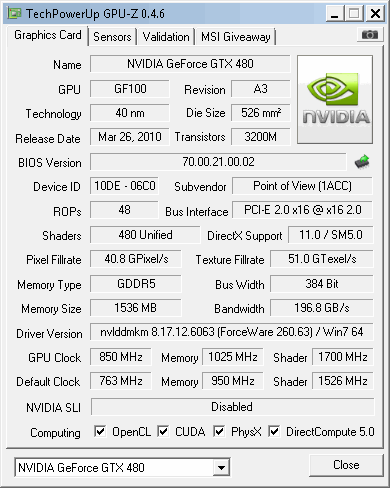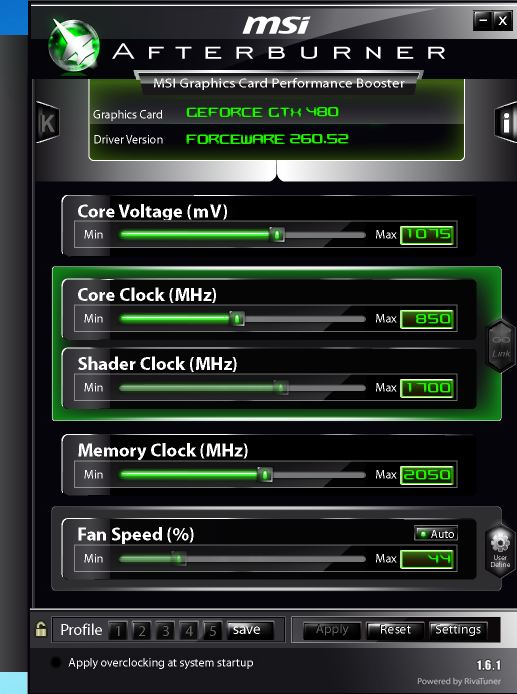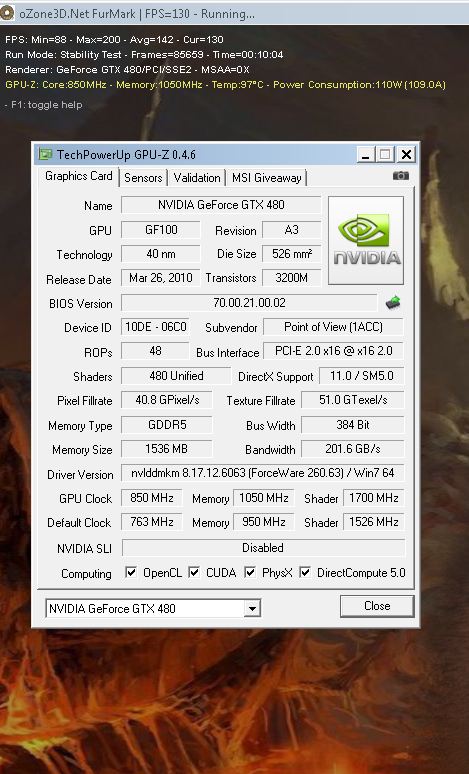Index
Page 2 of 9
Overclocking
Point of View / TGT GTX 480 Ultra Charged is a factory overclocked card that currently boasts the title of the fastest GTX 480 we’ve tested so far. Unlike the reference card where the GPU runs at 700MHz, shaders at 1400MHz and the memory at 3700MHz, Point of View/TGT Ultra Charged card runs at 763MHz for the GPU, 1536MHz for the shaders and 3800MHz for the memory.
TGT team is in charge of overclocking and of course handpicking the best GF100 chips, the ones capable of hitting 850MHz. Our sample, for instance, has no problem running at 850MHz. We didn’t meddle with voltages nor manual RPM settings; all we did was push a slider in MSI’s Afterburner. The memory ran at 1050MHz (4200MHz effectively), except in Unigine Heaven 1920x1080 Extreme Tesselation test. The results you’ll see on the following tables are measured with the GPU running at 850MHz and memory at 1025MHz (4100MHz effectively).



Of course, overclocking the card almost exclusively means higher noise levels, but you should know by now that the cooler is pretty loud, even on reference cards. Consumption increased as well – our test rig strapped with a reference GTX 480 drew maximum 515W; GTX 480 UC pushed this figure to 525W while our overclock resulted in the rig consuming up to 560W.
Testbed:
Motherboard: EVGA 4xSLI
CPU: Core i7 965 XE (Intel EIST and Vdrop enabled)
Memory: 6GB Corsair Dominator 12800 7-7-7-24
Harddisk: OCZ Vertex 2 100 GB
Power Supply: CoolerMaster Silent Pro Gold 800W
Case: CoolerMaster HAF X
Fan Controler: Kaze Master Pro 5.25"
Operating System: Win7 64-bit
260.63_desktop_win7_winvista_64bit_english
10.9 CCC
The following results show results after overclocking. You’ll notice that the GTX 480 UC OC faster than the reference card by 15% to 20%.


